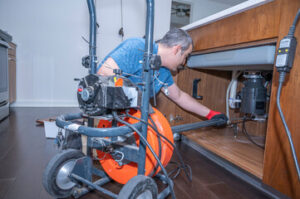Kitchen Renovation Atlanta is a significant investment. To minimize costs and ensure a smooth project, plan by setting clear goals before you start.

Whether you want to upgrade worn-out surfaces and finishes or boost your home’s resale value, the right renovation upgrades can improve livability for years.
Cabinetry is the backbone of a kitchen’s structure, and it can be used to express your style as well as store a wide variety of items. It’s important to carefully consider your needs and wants for the space before making any changes to the cabinets. A good way to do this is to draw a scaled floorplan of the existing room and experiment with different configurations. Then, think about the materials you want to use in the space. Natural wood offers classic beauty, but it’s prone to scratches and dents. High-quality manufactured woods and engineered wood products offer a more durable finish with less maintenance requirements. High-quality melamine or thermofused laminate also provide an attractive and affordable option for many homeowners.
When it comes to selecting the color and finish for your new cabinets, a professional designer can help ensure that the new color matches or blends with the old cabinets to create an integrated, cohesive look in the room. Also, a designer can make sure that the new cabinets are properly sized to fit in the space and have the necessary storage features for the intended purpose of the room.
Adding upper cabinets is an effective way to expand storage in a kitchen. They’re typically mounted on the wall above the counters and lower cabinets, and they can be used to display sentimental dishes, barware, or decorative teapots that you don’t want to store away in a pantry. This is a great way to add some visual interest to a kitchen and create a focal point in the room.
If you’re adding a wall of upper cabinets, it’s smart to install crown molding to cap off the ends of the new cabinets. This will give the kitchen a finished, custom appearance and hide any gaps or imperfections in the wall.
Aside from being a nice aesthetic touch, molding can also help to conceal the gap where the cabinets meet the walls, and it can reduce the amount of dust that collects in the corners of a room. If you’re planning to install crown molding in your kitchen, it’s a good idea to do it before you paint the room, as this will minimize labor costs and eliminate the need for any extra touchups later.
Countertops
Countertops are the most visible component of any kitchen and can play a major role in shaping your aesthetic. When choosing countertops, homeowners should consider their lifestyle and the type of countertop material that will best complement their kitchen flooring, cabinets, and appliances. In addition to weighing design options, it’s important to choose a material that is durable, stain-proof, scratch-resistant, and safe for food preparation.
Once considered an expensive luxury, granite countertops are now more commonplace and can be found in many home improvement stores and kitchen showrooms. They are popular for their unique color patterns, durability, heat and bacteria resistance, and ability to withstand scratches. Granite is also known for being nonporous, which makes it resistant to stains and more hygienic than other types of countertop materials.
Porcelain tile is another popular option because of its natural beauty and durability. It is available in an extensive range of colors and styles, including some that mimic the look of marble or other natural stone. However, like other tiles, porcelain is susceptible to chipping and cracking. It is also a poor choice for high-moisture areas, as it can absorb water and become discolored quickly.
Reclaimed wood or butcher-block countertops are a beautiful option for any kitchen. Their warm, earthy hues and rustic feel create a cozy space that will complement many styles of decor. While these counters are easy to clean, they will require frequent refinishing and may require extra care around high moisture areas like sinks and dishwashers.
Stainless steel counters add a sleek, modern appearance to any kitchen and are a great option for those with industrial style tastes. They are heat and bacteria-resistant, but show fingerprints easily and may require a bit more upkeep than other materials.
One of the quickest and easiest ways to change your kitchen’s look is with a fresh coat of paint. This can be done in a variety of colors to match your existing palette or switch up the entire room’s look. Before renovations begin, it is important to protect the rest of your home with plastic sheeting and tarps to prevent dust and debris from spreading.
Flooring
Kitchens and master suites are the top two home renovation projects that deliver the greatest return on investment (ROI) according to real estate data. But a remodel is more than just about adding new appliances, countertops and cabinets—it’s also about changing the floor plan and layout, making it a more functional space that meets the family’s needs and fits their lifestyle.
When it comes to kitchen upgrades, a well-thought-out design can boost resale value and create an inviting, comfortable space that’s a pleasure to cook in. But a full kitchen renovation can be expensive, so it’s important to consider what you want the finished product to look like and how it will affect your daily life.
Once you know the scope of your renovation, it’s time to make decisions about the materials you’ll use. Paint is one of the cheapest elements to replace, and painting before the cabinets and backsplash go up can save labor costs, avoid extra touchups later on and ensure that you get exactly the color you’re looking for.
It’s also a good idea to talk to a contractor about how the changes you’re making will impact your home’s energy efficiency. Whether you’re replacing old insulation or adding new drywall, they’ll be able to advise on what type of products will best protect you from drafts and outside temperatures while staying within your budget.
Once the framing and utility work is done, it’s time to put the finishing touches on your renovated kitchen. This includes putting in new baseboards, trim and paint—as well as updating the lighting and plumbing fixtures.
It’s also a great time to upgrade your flooring. While tile is durable and easy to clean, it’s not soft enough for a busy kitchen. Luxury vinyl and laminate are softer and easier to stand on, while still offering a wide range of wood looks that can be convincingly mistaken for the real thing.
Appliances
Investing in new appliances can be the quickest way to update your kitchen. Not only are newer appliances more energy efficient but they’re also usually better designed with features that make cooking and cleaning easier. When selecting your appliances, be sure to choose a style that complements your kitchen design and décor.
For example, a stainless steel refrigerator may make sense in a kitchen with a gray color scheme while a glass or white oven might work best for a traditional kitchen. You should also consider the amount of storage you need and how the location of your appliances will impact your workflow. For example, you’ll want to make sure your stove is easily accessible from the sink and that you have enough space for your large pots and pans.
One of the worst mistakes that can be made during a kitchen remodel is to introduce too many trendy elements. According to Howard, “Too many scene-stealing accents will overwhelm the room.” Instead of focusing on trendy features like a bright backsplash or fancy countertop, focus on choosing neutral finishes that will be easy to update or replace in the future.
Lighting is another kitchen upgrade that can create a big visual impact. Choose recessed ceiling fixtures that provide ambient light for the entire space or opt for under-cabinet lights to highlight specific areas of your kitchen. You can also use pendants or wall-mounted sconces to add focal points to the space and set the mood.
Finally, don’t forget about your electrical outlets. You’ll want plenty of plugs for your appliances and if you plan on using an island or extra seating area, be sure to plan for an additional outlet or a power strip. You don’t want to be stuck without a working microwave or having to eat three meals a day from restaurants during your kitchen renovation!
Whether you’re doing a complete kitchen remodel or just replacing a few appliances, it’s important to have a clear plan and a budget before beginning the project. With careful planning, you can create the kitchen of your dreams without sacrificing quality or time.








